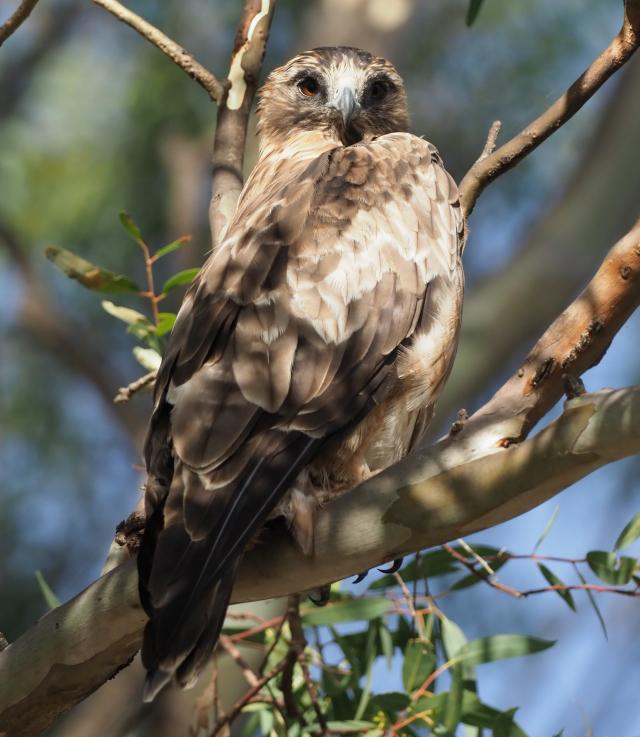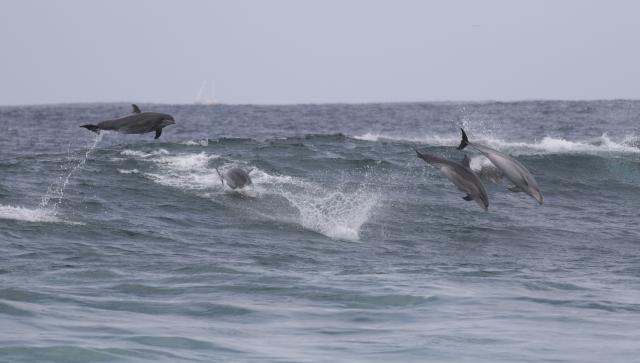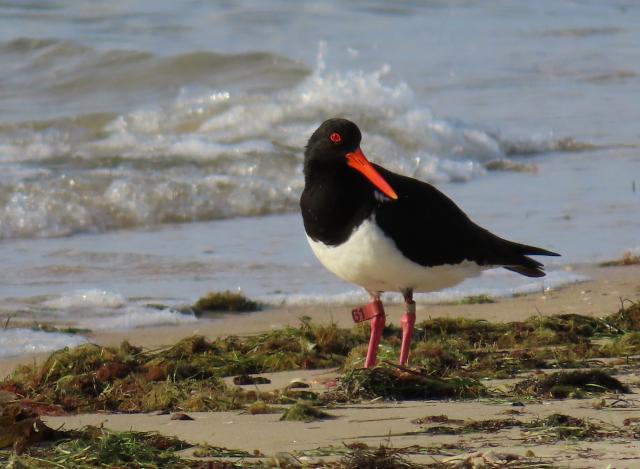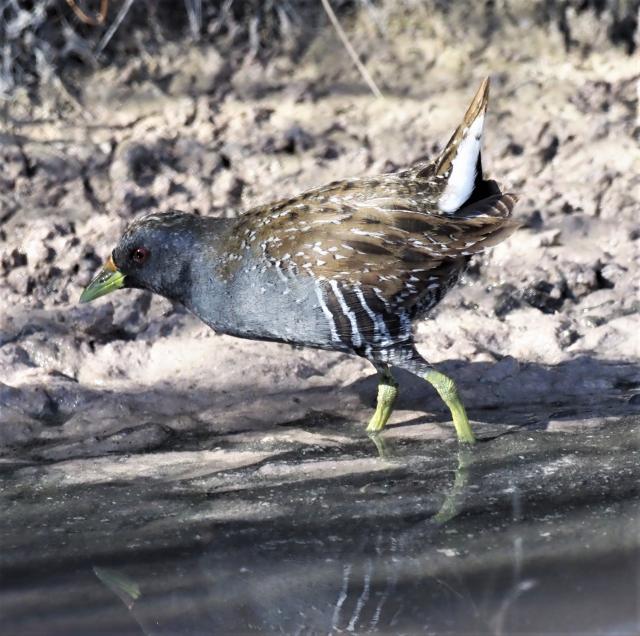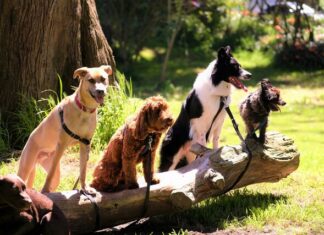Summer has come to an end and temperatures have been balmy and pleasant, although it would be lovely to have a day of steady rain. I returned home from annual leave to find my garden very dry with some plants that were definitely in need of reviving!
I ended up seeing around 80 species of birds on the south coast of New South Wales, around the beautiful town of Bermagui. The highlights were seeing a superb lyrebird at Mimosa Rocks National Park (as usual the beautiful bird ran off and I was unable take a decent photo), a square-tailed kite at Moruya, three azure kingfishers, and seeing a pod of around 15 dolphins leaping over waves at Beares Beach on a wild and windy day.
After returning home I went to Port Fairy for a Birdswing Pelagic trip and a look at the waders on Killarney Beach. Over the past few weeks I have driven almost the length of Victoria from the border of NSW to Port Fairy, and did not see one black-shouldered kite, wedge-tailed eagle or brown falcon, which was most disappointing. I have seen thousands of little corellas in Bermagui, Bairnsdale, Leopold, Winchelsea, and Port Fairy over the past few weeks, but I still think that Winchelsea is the corella capital of Australia.
There were about 20 ruddy turnstones on Killarney Beach, as well as sanderlings, sooty oystercatchers and red-necked stints. I dropped into Lake Colac on the way to Port Fairy and a few great-crested grebes are still nesting, which is great to see.
I received an email from Alan, who has also had a holiday, at the Grampians. Alan’s partner Anne spotted a little eagle when they were walking along the dam wall at Lake Fyans. It sat very still for long enough to get a few profile photos. Alan wanted a photo of the eagle in flight and returned the next day to the same spot, but the weather was very overcast, so he didn’t achieve a great photo.
In the same area there was a large nest in a gum tree, so maybe there was a little eagle nest at Lake Fyans. On a sad note Alan saw what he thought were two magpies hanging upside down and playing. Sadly, when he zoomed in with his camera, one of the birds was a recently deceased magpie caught up in fishing line entangled around a branch, which is a reminder of what can happen when fishing line is not disposed of properly. Lake Fyans was quite low so perhaps the line was snagged underwater at some point, broke off and exposed as the water level dropped.
There was a sole magpie sitting in the same tree the next day looking in the direction of the dead bird, probably its partner. On a brighter note, the gang-gang cockatoos were playful and photogenic, right in the caravan park at Hall’s Gap! There were also fledgling kookaburras, corellas and cockatoos all screaming out for a feed at the caravan park.
Alan also has been looking around Blue Waters Lake, and reports that the lake needs a top up, with blue-green algae signs obvious. The six cygnets living at the lake are gaining their adult plumage and are becoming a darker colour as they would be about two months old now. The three herons at the east end of the lake have fledged and there was no sign of the tawny frogmouth family.
I received an email from Andrew from Ocean Grove, who recently went to Edwards Point Reserve and took a lovely image of a pied oystercatcher. Andrew also took a photo of a far eastern curlew, which is the largest migratory shorebird in the world, at Edwards Point, which is a wonderful observation.
Thanks so much for the emails and bird observations, they are much appreciated.



